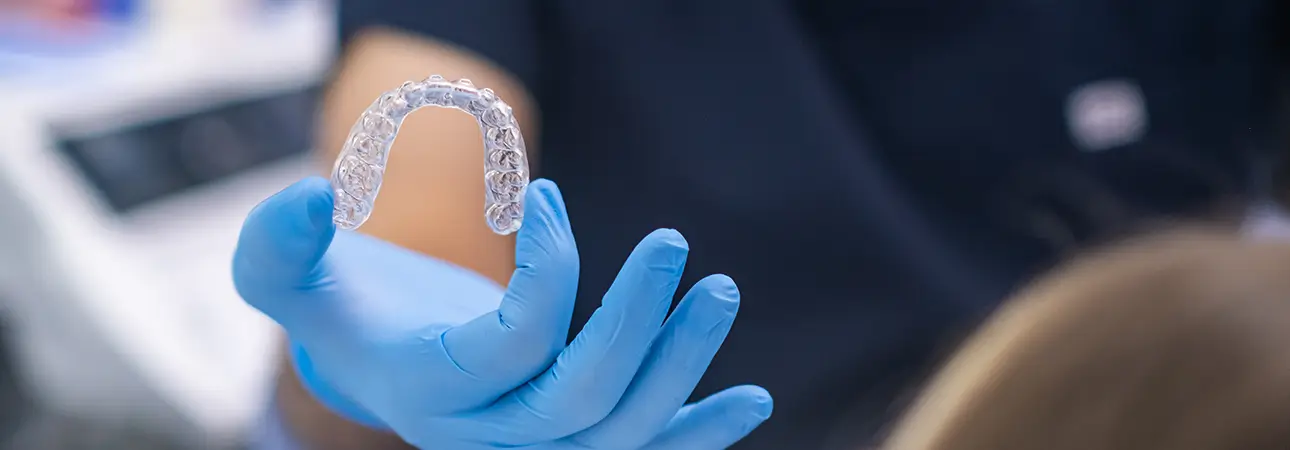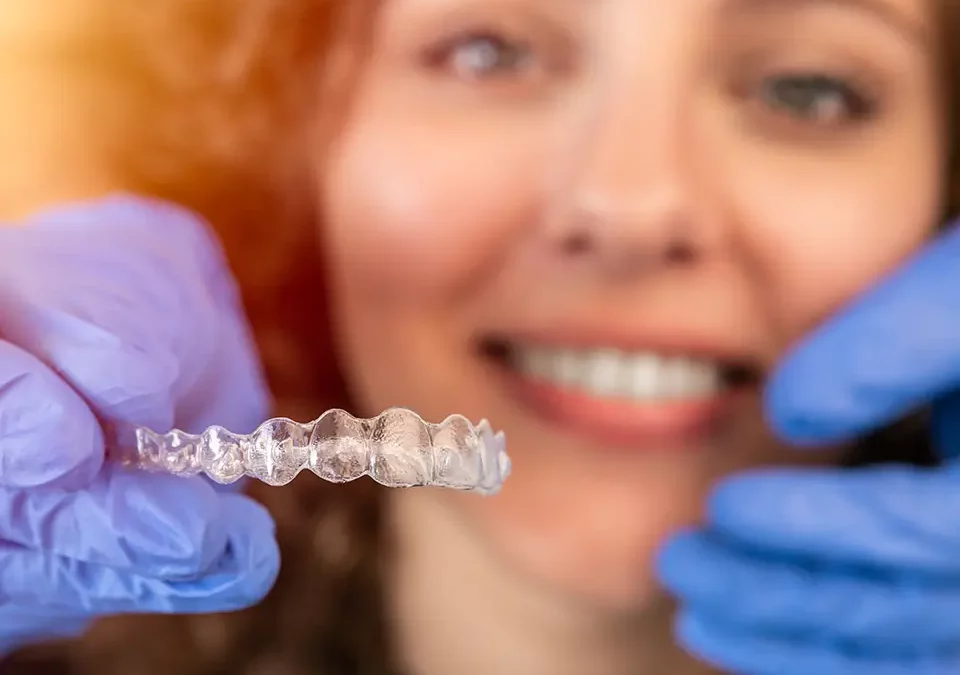Invisalign and traditional braces are the prominent options in orthodontic treatments for achieving a straighter and confident smile. Both these methods have unique advantages and features that are essential to consider when seeking orthodontic care. This blog will explore everything you need to know about Invisalign vs braces, including their differences and similarities. Our dentists in Maple Ridge will help you make an informed choice for your orthodontic journey.
Understanding Invisalign vs Braces
What is Invisalign?
Invisalign is a modern orthodontic treatment utilizing clear, removable aligners to shift teeth into their desired positions gradually. These aligners are custom-made for each patient. Dentists create them using digital impressions of their teeth. This provides a subtle and comfortable alternative to traditional braces.
What are Braces?
Traditional braces are metal brackets fitted to the teeth and connected by wires and elastic bands. This fixed orthodontic appliance applies constant pressure to move teeth gradually into proper alignment. While braces are more noticeable than Invisalign, they remain highly effective for correcting orthodontic issues and crooked teeth.
Key Differences: Invisalign vs Braces
1. Appearance
Appearance is the main difference between Invisalign and braces. Invisalign aligners are virtually invisible, making them appealing to individuals who prefer a more discreet orthodontic treatment.
These individuals may include teenagers, professionals, and adults. On the other hand, traditional metal braces are more conspicuous because of their metal brackets and wires. Although advancements like ceramic braces offer a less noticeable alternative.

2. Comfort
Invisalign makes aligners from smooth, comfortable plastic, eliminating the risk of mouth abrasions commonly associated with braces. Additionally, since Invisalign aligners are removable, patients can enjoy greater freedom when eating, brushing, and flossing. Braces, while effective, may cause discomfort and require adjustments periodically, particularly after tightening appointments. Patients must restrict their diet to certain types of food because braces cannot be removed during treatment.
3. Maintenance
Maintaining oral hygiene is generally easier with Invisalign than with braces. Patients can brush and floss normally with removable aligners, reducing plaque buildup and tooth decay risk. Braces require extra care to clean around brackets and wires, taking more time and attention to avoid dental problems.
4. Treatment Duration
The duration of treatment varies for each patient and depends on the severity of their orthodontic issues. Invisalign treatment tends to be shorter than braces, with some cases completing therapy in as little as six months. However, braces may be more effective and efficient in achieving desired results for complex orthodontic cases. Our Maple Ridge dentists can help you choose the right option for you.
5. Effectiveness
Invisalign and braces are highly effective at straightening teeth and correcting orthodontic problems, including crowding, spacing, overbites, underbites, and crossbites. Overbites happen when the upper front teeth overlap more than they should vertically with the lower front teeth.
Underbite occurs when the lower front teeth protrude and overlap horizontally with the upper front teeth. Crossbite occurs when the upper teeth lie on the lower teeth when the mouth is closed. The choice of Invisalign vs braces ultimately depends on individual preferences, treatment goals, and the recommendation of an experienced orthodontist.
6. Cost
Cost is an essential factor to consider when choosing between Invisalign and braces. The cost of Invisalign treatment tends to be more expensive than traditional braces, although this can vary depending on location and the case’s complexity. Many orthodontic practices offer financing options to help make treatment more affordable. Additionally, there are also Invisalign financing options that are useful to consider.
7. Lifestyle Considerations
Invisalign aligners offer greater flexibility for individuals with active lifestyles or participating in contact sports. Since they are removable, patients can easily remove the aligners during activities and replace them afterward. However, wearing the aligners for the recommended 20 to 22 hours daily is essential to ensure optimal results.
8. Dietary Restrictions
Invisalign has no dietary restrictions because you can remove the aligners before eating. On the other hand, individuals with braces may need to avoid certain foods that are hard or sticky. These types of food are prone to cause damage to the brackets or wires. Following dietary guidelines provided by your orthodontist can help prevent complications during treatment.
Making the Right Choice
When deciding between Invisalign and braces, it’s important to consult with an orthodontist. The orthodontist will assess your needs and recommend the most suitable treatment for you. You should consider factors such as the complexity of your case, budget, lifestyle preferences, and aesthetic concerns.
Get Your Orthodontic Treatment at Dentistry 32 Today
Invisalign vs braces presents individuals with a choice between two effective orthodontic treatments, each offering advantages and considerations. Choose Invisalign or braces for a healthier, straighter smile. Both options offer convenience and reliability for improving your teeth.
You can confidently embark on your orthodontic journey by understanding the differences between Invisalign and braces and seeking guidance from our dentists in Maple Ridge. Contact us to make an informed decision tailored to your unique needs and preferences.

